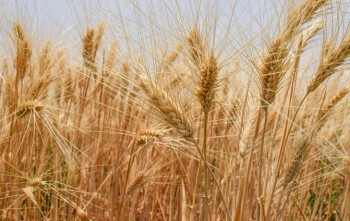Let's Go for a Leisurely Walk After Eating: The Secret to Control Your Blood Sugar Level

Shirleen Gabriele Havellar S,Gz
Nutritionist
After enjoying a delicious meal, we often feel sleepy and tempted to sit or lie down. But, did you know that taking a short walk after eating can help your body manage blood sugar better? When we walk, our muscles work more actively and use the glucose from the food we just consumed, helping to control our blood sugar levels to not rise too high.
Research from the Journal of Applied Physiology shows that a stroll done 15 minutes after a meal can significantly lower blood sugar levels. This is due to the increased absorption of glucose by the muscles during light physical activity.
In addition to lowering blood sugar, walking can also improve insulin sensitivity. Insulin is a hormone that helps the body's cells take up glucose from the blood. With better insulin sensitivity, the body is more efficient in managing blood sugar.
The Right Time to Walk
When is the best time to walk? Research has found that walking within 30 minutes after eating is the most effective for controlling blood sugar spikes. So, no need to rush, just take 10-15 minutes after eating to go for a stroll in the area surrounding your house or office. (of course, walking vs being sedentary is always healthy! – but it brings extra advantages when walking after eating. Read on!)
Additional Benefits of Walking After Eating
Besides helping control blood sugar, walking after eating also has many other benefits:
- Improves Digestion: Helps the digestive process by speeding up the movement of food through the digestive tract.
- Boosts Mood: Light physical activity can stimulate the production of endorphins that will make you feel happier.
- Helps in Weight Loss: Burns additional calories which can help maintain or lose weight.
Tips for a Leisurely Walk After Eating
Here are some tips you can apply to maximize your leisurely walk experience after eating:
- Duration: 10-15 minutes is enough time for light strolling after eating.
- Intensity: Walk at a leisurely pace, no need to rush.
- Location: Find a comfortable and safe place, such as a park or the area around your house.
- Consistency: Do it regularly after each major meal, whether it's breakfast, lunch, or dinner.
- Walking Companion: Invite friends or family to accompany you to make it more enjoyable.
So, don't hesitate to start this healthy new habit. A leisurely walk after eating is not only enjoyable but also an effective way to keep blood sugar levels stable and improve overall health.
You can also maintain stable blood sugar levels by consuming foods and snacks that have low glycemic index level, such as YAVA. YAVA is committed to supporting Indonesians in achieving optimal health, which includes maintaining more stable blood sugar levels. YAVA uses natural ingredients, one of which is Lontar Sugar. Lontar Sugar has a low glycemic index and is rich in nutrients, making it a safer option if you intend to maintain more stable blood sugar levels. Find various YAVA products such as Granola with Cashew, Granola Bites, Granola Puffs, Krispi Puffs and Cashews at your favorite offline or online stores.
Reference
Bellini, A., Nicolò, A., Bazzucchi, I. & Sacchetti, M., 2022. The effects of postprandial walking on the glucose response after meals with different characteristics. Nutrients. doi: 10.3390/nu14051080.
Caruso, L., Zauli, E. and Vaccarezza, M. (2023) ‘Physical exercise and APPETITE regulation: New insights’, Biomolecules, 13(8), p. 1170. doi:10.3390/biom13081170. .
Engeroff, T., Groneberg, D.A. and Wilke, J. (2023) ‘After dinner rest a while, after Supper Walk a mile? A systematic review with meta-analysis on the acute postprandial glycemic response to exercise before and after meal ingestion in healthy subjects and patients with impaired glucose tolerance’, Sports Medicine, 53(4), pp. 849–869. doi:10.1007/s40279-022-01808-7.
Koloski, N.A. et al. (2020) ‘Functional dyspepsia is associated with lower exercise levels: A population‐based study’, United European Gastroenterology Journal, 8(5), pp. 577–583. doi:10.1177/2050640620916680.
Van Dijk, J. W., Tummers, K., Stehouwer, C. D. A., Hartgens, F., van Loon, L. J. C., 2019. "The immediate effects of a single bout of exercise on glucose metabolism in type 2 diabetes mellitus." Diabetes Care, 42(4), pp. 586-593.


















